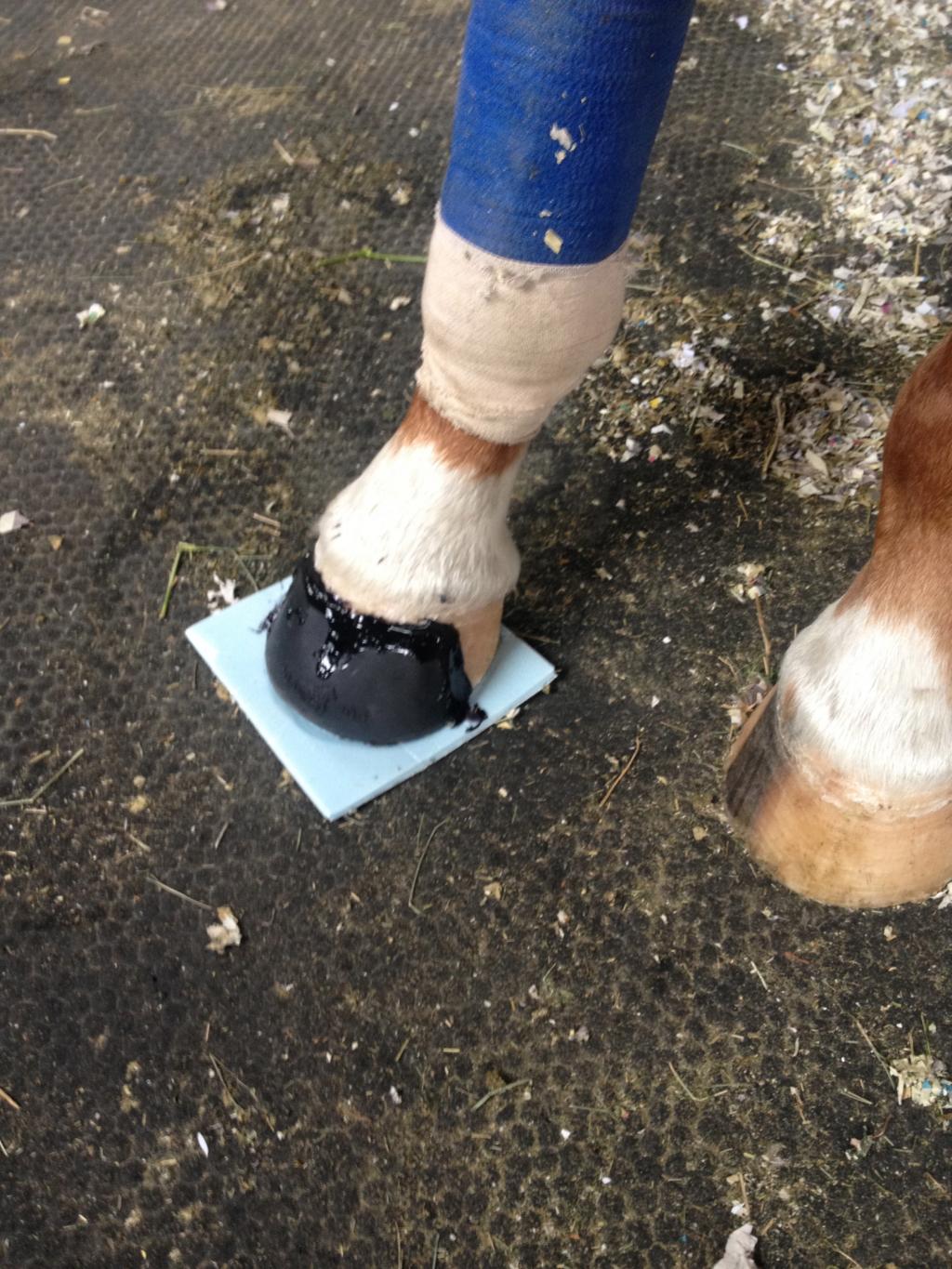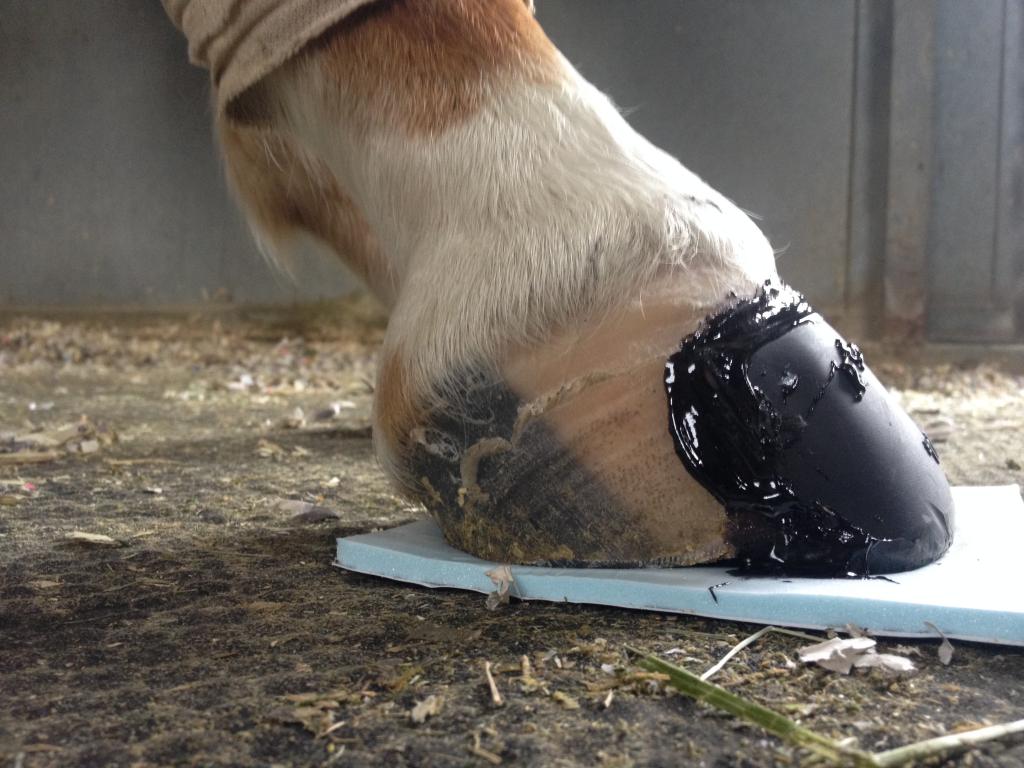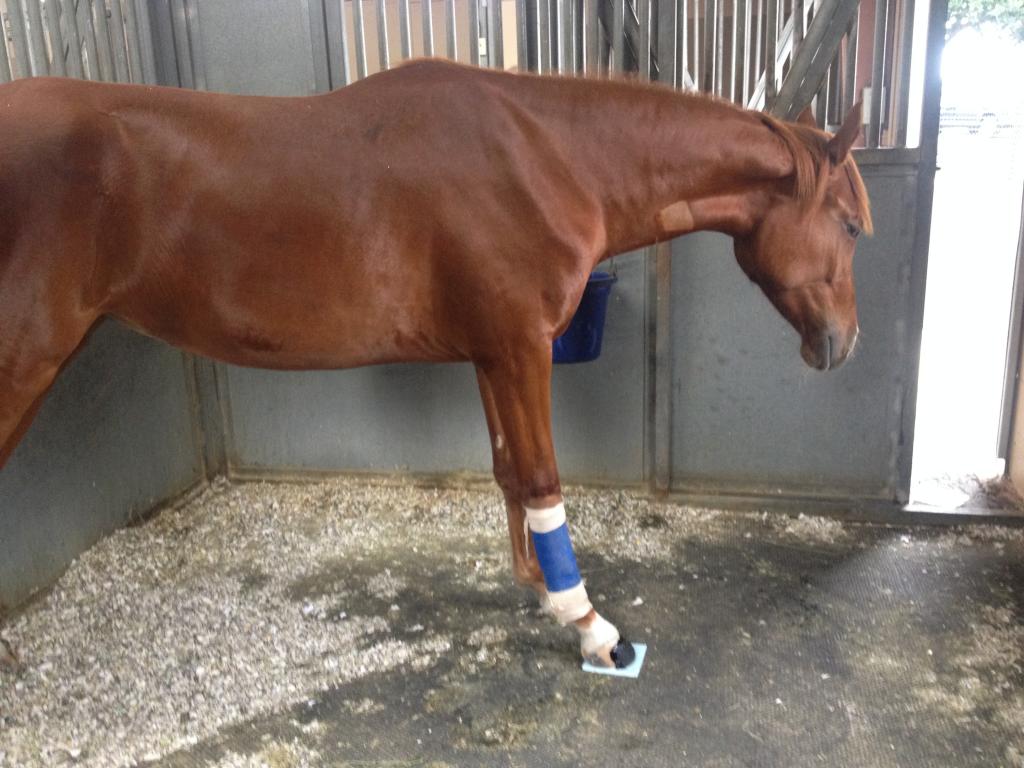Submitted by Lisa Morris, Team Easyboot 2014 Member
It is the time of the year when horse owners can look forward to new foals gracing their barns and pastures! A beautiful, healthy, sound foal doesn’t just “happen.” Often years of dreams, research, care, time and finances are wrapped up in that new baby! Good horse breeders have chosen their good mare with excellent conformation with an equally good mind. They have used the services of the best stallion that they can afford that will complement and improve the faults and strengths of their mare. Unfortunately, every horse does have conformation faults and sometimes foals inherit conformation faults from their ancestors that the parents may not have themselves. Last spring, a local lameness veterinarian contacted me to help solve a conformation problem that would potentially lead to a soundness problem in a well-bred Warmblood Sport Horse foal. This beautiful foal was full of potential but had a congenital club hoof that required surgical correction. We turned to hacking an Easycare Glue-On to help!

Sometimes we have to think outside the box.
Originating at the forearm, the deep digital flexor tendon (DDFT) runs down the back of the limb and terminates at the back of the coffin bone. The strong inferior check ligament (IFCL) originates in the front knee region and attaches to the DDFT at the middle back of the cannon bone. Excessive pull on the deep digital flexor muscle and tendon unit causes a pull or flexion of the coffin joint. Foals with this condition are unable to fully extend their lower limb joints. The condition of the deformity can be minor or so severe that the foal cannot touch its heel to the ground. Foals with a club hoof tend to land toe-first, and their heels growth rate is faster than the toe growth, causing hoof distortion, hoof wall dishing and ridges. The toe is worn away and the heel grows unfettered. The frog often recedes, the heels contract and the frog is narrow and hidden. Instead of the frog and digital cushion receiving primary landing impact, it shifts to the hoof wall and the coffin bone, often leading to lameness issues.
The method this Veterinarian chose for correcting this issue was an “Inferior Check Ligament Desmotomy.” This is a surgical procedure in which the Veterinarian transects the DDFT to relieve the strong tension on the coffin joint. The Vet kept the foal hospitalized at his clinic to heal and be rehabilitated while the ligament scars and the leg strengthens. During this time, careful hand walking and corrective farriery is critical. This Veterinarian chose to do his own hoof trimming utilizing radiographs and skilled observation to lower the heels just enough to promote proper movement and healing. While the foal was being hand walked and was bandaged on stall rest, the Vet was not concerned about the hoof reverting to wearing down the toe and growing too much heel, but he was concerned about the next step. He wanted the owner to turn out the foal when it went home to have as much healthy movement as much as possible but he needed some type of hoof protection that would allow the toe to be protected from wear but would allow the heels to be trimmed down with careful, frequent touch ups. He didn’t really want to nail on a forged steel toe plate.

The beginning of the Macgyver boot chopping process. Gloves on to keep the boots clean so the glue sticks!
This vet always liked Easycare products and I am sent to fit boots for his clients. We have a good professional relationship. His idea was brilliant, and worked so well; I thought I would share it here so others may benefit from it. We took an Easycare Glue-On Shell and adapted it to protect only the toe. First I fitted the foal to an Easyboot Glue-On Shell utilizing the Fit Kit. Next, I took the correct size shell and we cut it down utilizing a chop saw. My husband helped me with this process, because I had never used that tool, so he is the family expert. Care was taken to use gloves so hand oils would not detract from the hoof glues that would be used to adhere the adapted Glue-On. Next, the Vet reviewed the Glue-On and decided that the boot tread was still too high and would leave the foal with a negative palmar angle. The solution was to use a bench grinder to level off the remaining tread on the shell. The foal was pretty buzzed up from being on stall rest for so long and we really needed it to be very still for the gluing process so the Vet administered light sedation. The Vet Tech is a “foal whisperer” and did a lovely job keeping it very still while I glued the adapted Glue-On in the stall. First, I cleaned the hoof very well and rasped with the soft side of my rasp just to “rough up” the hoof wall where the boot Glue-On Shell would be glued. Next, I used a heat gun to dry the (very clean) hoof. The actual gluing was very quick and easy! I used SikaFlex 227 on the toe callus part of the boot and Vettec Adhere on the walls of the boot. I set the hoof down on a foam pad and picked up the opposite hoof for a few minutes while the Vettec Adhere quickly cured. I put a bead of Adhere around the top of the boot and used my finger to create a water tight seal.

The Glue-On curing on the foam pad before the opposite hoof was picked up.

Lateral image of the Macgyvered Glue-On Curing!

Almost done, a little drunk from light sedative… Years of productive, sound life ahead of her!
This was an Easycare Glue-On Shell hack that helped this foal, the happy Veterinarian sent it home the next week and was able to maintain keeping the heels trimmed low while the “adapted” Glue-On was in place, until it was time to come off. Removal was simple with a flat head screwdriver. Because only the toe of the hoof was in the closed environment, leaving this package on caused no long-term harmful effects to the health of the hoof. The Vet was pleased and will call me again if he has new surgical club hoof cases. The warmblood foal has an excellent future as a sport horse. Have you chopped or hacked an Easyboot Glue-On to help a horse? Do you have Macgyver gluing and adaption techniques? Please share your experience!




